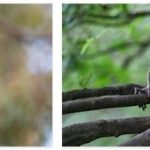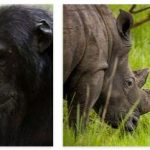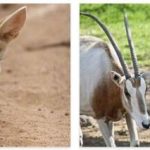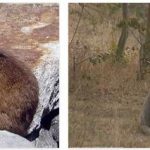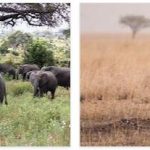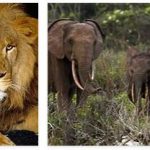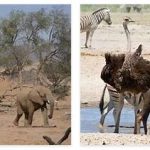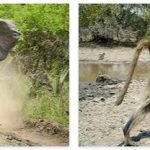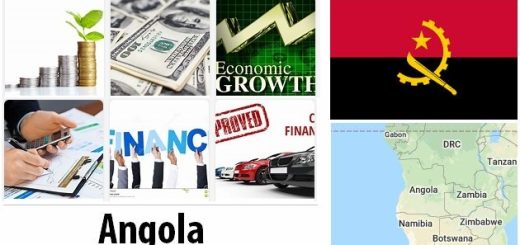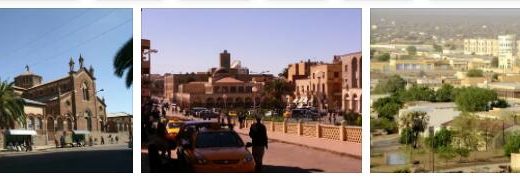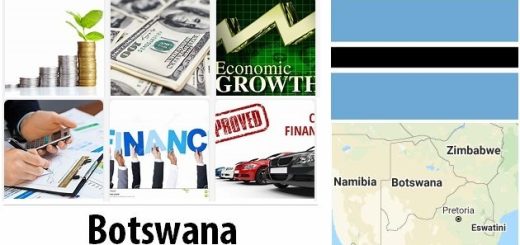Senegal Wildlife and Economy
Animals and Plants
Which animals live in Senegal?
Six national parks have been set up in Senegal to protect animals and plants. Above all, some mammals such as elephants, giraffes or leopards can only be found in these protected areas.
Among the species of monkeys, which are found more frequently in Senegal, including the Guinea baboon Senegal Bushbaby, the Patas and the Western Vervet monkey. Aardvarks, hyrax, Mozambique hares and warthogs live across the country. Several species of mice, squirrels, and bats are also indigenous.
There are also hippos, cheetahs, caracals, African civets, spotted hyenas and several species of mongoose such as the zebra mongoose. The common antelopes include the bushbuck and the red-fronted gazelle. Water buffalo live in the southeast. The African manatee, a species of manatee, but also whales and dolphins can be found off the coast.
Of course there are also reptiles: crocodiles, iguanas, turtles and snakes. The poisonous snakes include the African tree snake, the puff adder or the green mamba. The rock python is not poisonous.
There are many species of birds. In autumn there are also many migratory birds from Europe that winter here. You can often see pelicans, vultures and guinea fowl.
What is growing there in Senegal?
Senegal lies with its north in the Sahel zone. The Dornbusch savanna is the predominant landscape. Only grasses, a few acacias and occasionally the baobab, the African baobab tree, grow here. It stores a lot of water in the rainy season, so that it can survive in the dry season, although it sheds its leaves.
Towards the south, the landscape becomes a dry savannah. A little more rain falls here. The napier grass grows here several meters high. There are also a few more trees, for example tamarind and flamboyant trees.
In the far south it becomes tropical and humid. Whole forests of kapok trees, mahogany and teak trees, baobab and bamboo grow here. The shea tree from which shea butter is made for cosmetics is also common. Mangroves grow to the west, along the Sine, Saloum and Casamance rivers.
Economy
Why is Senegal a poor country?
Senegal is one of the poorer countries in the world, but not one of the poorest. In 2018, Senegal was ranked 166th out of 189 countries in the Human Development Index, which compares the prosperity of the countries. Reasons for this are, for example, the climate and the location (the entire north is in the Sahel zone) and also the strong population growth. Food and water are therefore scarce. A lack of traffic routes is also a problem. There is, however, an international airport and ports on the coast. For more articles on Senegal and Africa, please visit ehistorylib.
Most of the country’s income comes from the service sector, 59 percent. Industry generates 24 percent and agriculture 17 percent. Above all, fish, phosphates and peanuts are sold abroad, i.e. exported.
Agriculture and fishing
Although only 17 percent of the country’s income comes from agriculture, 77 percent of the population work here. Crop reduction through deserts education, soil erosion from deforestation, overgrazing, drought and locusts are a major problem.
Field cultivation takes place mainly in the south and in the north on the Senegal River. Many small farmers grow for their own needs. Rice, millet and corn are the most important products, and tomatoes, beans, melons and mangoes are also harvested.
For the export play peanuts a big role, but they are now used by the fish. Cotton and gum arabic are also important for export. This is used, for example, for the production of artist’s paints, and in the past also a lot for gumming, for example to make stamps “sticky”. Sugar cane is grown in the northwest, near the town of Richard Toll.
The livestock includes sheep, goats, cattle and chickens. Meat, like rice and milk, has to be imported as well, because the goods produced in the country are insufficient.
Fishing is very important to the country’s economy. However, illegal (illegal, unlawful) fishing is a problem. It is against the law to fish without permission. This is also done by foreign fishing fleets.
Industry: phosphates and iron ore
The mining of phosphates and iron ore is one of the main sources of income for the industry. Other natural resources that are mined include gold and oil.
There is a food industry, mainly for fish, peanuts and sugar, as well as a chemical industry and textile processing.
Services
Services make up the largest share. Transport and telecommunications in particular play an important role here. Tourism and finance play a lesser role.



